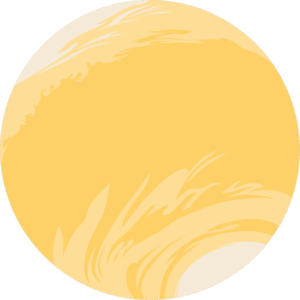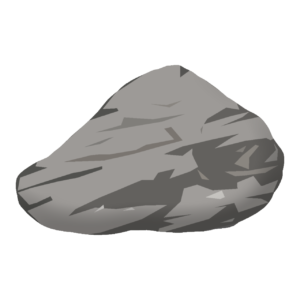The Downlink • Mar 03, 2023
Never let a rock sneak up on you
Space Snapshot

It’s not every day you can plan to photograph an asteroid streaking through the sky. This meter-sized asteroid was spotted by Hungarian astronomer Krisztián Sárneczky only a few hours before it collided with our planet on Feb. 13, giving Dutch photographer Gijs de Reijke enough time to travel to the predicted location of impact and set up for the perfect shot. Learn more about this astonishing photo and others in our collection of February’s coolest new space pictures. Image credit: Gijs de Reijke.
You love space, now take action
This weekly newsletter is your toolkit to learn more about space, share information with your friends and family, and take direct action to support exploration. Anyone can subscribe at planetary.org/connect to receive it as a weekly email.
Mission Briefings


Old Venus data are teaching us new things about the planet. New research using three-decade-old data from NASA’s Magellan Venus orbiter suggests that heat from deep inside the planet may escape into space through areas where the outer rocky layer, or lithosphere, is thinnest. In these areas, plumes of molten rock rise to the surface and cause the lithosphere to flex, creating circular features called coronae (like the one pictured). NASA’s upcoming VERITAS mission could investigate further, potentially answering age-old questions about how our neighboring planet works. Image credit: NASA/JPL-Caltech.

NASA and ESA have new heads of science. NASA Administrator Bill Nelson announced on Monday that heliophysicist Dr. Nicola Fox will serve as the associate administrator for the agency’s Science Mission Directorate. Fox previously served as director of the agency’s Heliophysics Division, and was project scientist for NASA’s Parker Solar Probe. The European Space Agency also announced a new Director of Science, astronomer and astrophysicist Carole Mundell. She previously served as chief scientific adviser at the UK’s Foreign and Commonwealth Office and president of the UK Science Council, as well as holding several faculty positions at the University of Bath.

JAXA has chosen two new astronauts for future lunar missions. Japan’s space agency announced on Feb. 28 that it has selected two astronaut candidates who will begin a two-year training program. NASA has committed to landing a Japanese astronaut on the Moon as part of the two agencies’ partnership in the NASA-led Artemis lunar exploration program. JAXA’s astronaut corps hadn’t grown since 2009, when the agency picked two candidates for International Space Station missions.

With JWST’s success, NASA is looking to the future of space telescopes. At the recent meeting of the American Astronomical Society, a major topic of discussion was a six-meter space telescope proposed in the latest astrophysics decadal survey. NASA has begun referring to this proposed mission as the Habitable Worlds Observatory, since it would study potentially habitable exoplanets while also serving as a general-purpose observatory for astrophysics.
From The Planetary Society


With ever-cluttered skies, asteroid hunters want a space telescope. This image from astrophotographer Joshua Rozells shows the number of satellites that passed overhead during 85 minutes of shooting. It’s a stark demonstration of just how much light pollution ground-based telescopes have to contend with — one of the many obstacles to spotting asteroids before they impact the Earth. NEO Surveyor is a proposed NASA mission to look for potentially hazardous asteroids from space. This mission has support from Congress, but that support could waver in the coming years. This is why NEO Surveyor is one of The Planetary Society’s top advocacy priorities. Image credit: Joshua Rozells.

Spotting an asteroid is tough — figuring out its physical properties is even harder. But a new project is underway to develop a new process for deducing asteroids’ physical properties from afar. Led by researchers at the University of Belgrade and funded in part by a Planetary Society grant, the “Demystifying Near-Earth Asteroids” project applies a known measure of sunlight’s effect on asteroids’ orbits to infer their physical properties— whether they’re solid metal, for example, or piles of rubble loosely held together by gravity. Learn more about this innovative project.

Canada is building its first lunar rover. In February 2019, the Government of Canada announced an investment of $150 million dollars over five years to help small to medium-sized companies participate in the exploration of space. Now, the fruits of that investment are ripening. Peter Visscher, the director of Canadensys West, joins this week’s Planetary Radio to talk about the rover his company is building that will fly to the Moon in the early 2030s to look for water ice near the lunar south pole.
Don’t go the way of the dinosaurs!

Humans have something dinosaurs never did: a space program. We have the ability to prevent an asteroid impact if we invest in planetary defense — finding, tracking, characterizing, and deflecting asteroids, and coordinating all of these efforts internationally. This is one of The Planetary Society’s core enterprises, and every purchase you make from our online store — like this snazzy dino sticker — helps us do more to defend our planet.
What's Up

You can’t miss Venus and Jupiter in the evening sky this week. Both are shining very bright in the west after sunset, very close to each other. Venus is brighter and higher. If you look higher in the sky, you’ll see reddish Mars near the constellation Orion and the brightest star in the sky, Sirius. Learn more about what this month’s night skies have in store for you.
Wow of the Week

This painting by Planetary Society supporter Thom Comstock is titled “Orbital Ballet.” There is a beauty and grace to the way all objects move through space according to the laws of physics. As we continue to learn more about their cosmic dance, we can better understand our place within it all — and preserve our own existence by preventing a stray orbital ballerina from crashing into us someday. Image credit: Thom Comstock.
Send us your artwork!
We love to feature space artwork in the Downlink. If you create any kind of space-related art, we invite you to send it to us by replying to any Downlink email or writing to [email protected]. Please let us know in your email if you’re a Planetary Society member!


 Explore Worlds
Explore Worlds Find Life
Find Life Defend Earth
Defend Earth


